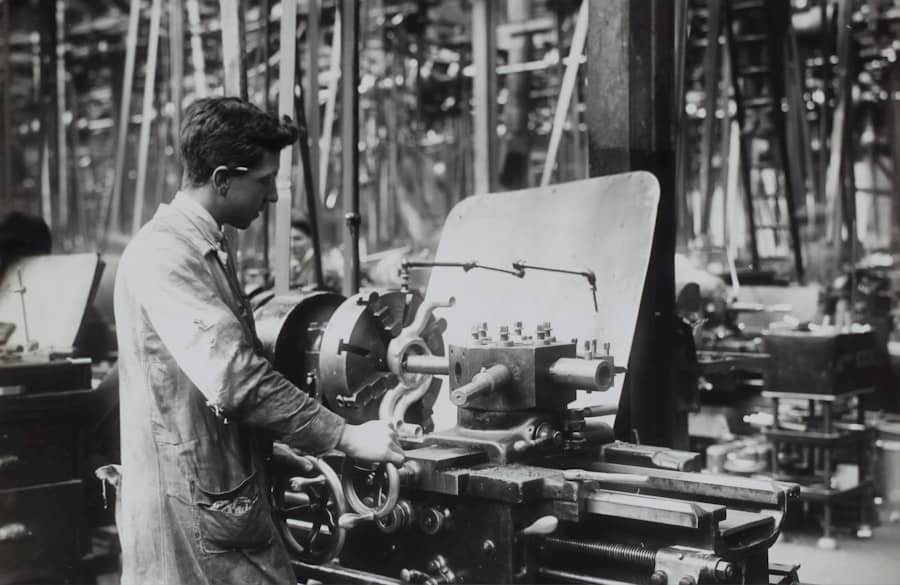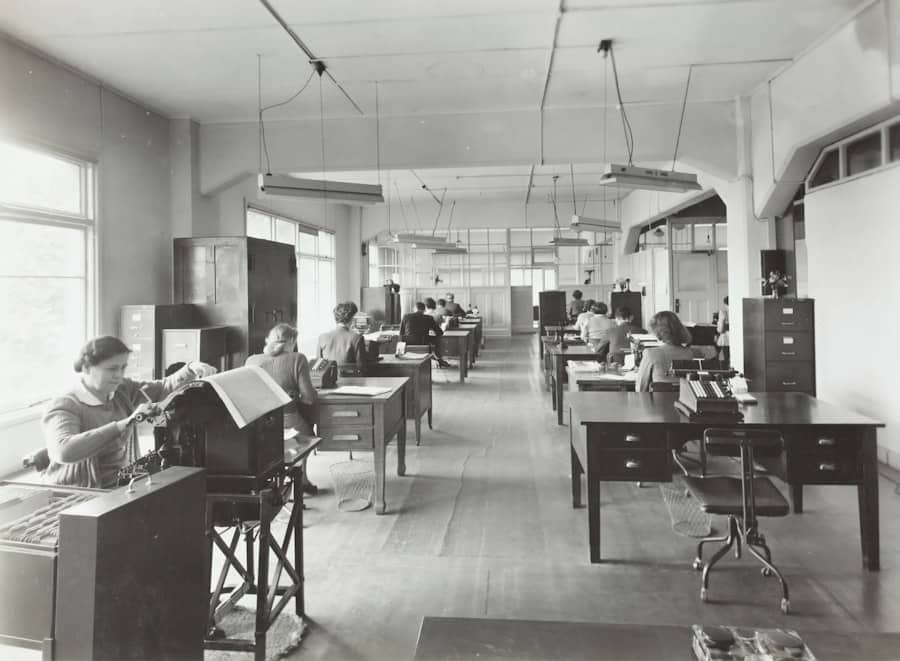Industrial policy is a government strategy that involves deliberate intervention in the economy to promote the growth and development of specific industries. This approach encompasses various measures, including subsidies, tax incentives, trade protections, and infrastructure investments. The primary objective of industrial policy is to create favorable conditions for the growth of industries deemed crucial for a country’s overall economic development.
It is often viewed as a means to address market failures and enhance the competitiveness of domestic industries in the global marketplace. The concept of industrial policy has been a topic of debate among economists and policymakers for many years. Supporters argue that strategic government intervention is necessary to rectify market failures, stimulate innovation, and nurture the development of key industries.
Conversely, critics contend that industrial policy can lead to inefficiencies, distort resource allocation, and result in favoritism towards certain industries or firms. Despite ongoing discussions and differing opinions, industrial policy remains a significant tool for governments to shape economic structures and promote sustainable growth.
Key Takeaways
- Industrial policy refers to government strategies to promote the growth and development of specific industries within a country.
- Developing economies often use industrial policy to stimulate economic growth, create jobs, and reduce poverty.
- Developed economies may use industrial policy to maintain competitiveness, promote innovation, and address market failures.
- Developing and developed economies have different approaches to industrial policy, with the former often focusing on import substitution and the latter on technology and innovation.
- Challenges in implementing industrial policy include political resistance, lack of coordination, and potential for market distortion, but successful case studies offer opportunities for learning and improvement.
Industrial Policy in Developing Economies
Addressing Constraints and Promoting Key Industries
To overcome these challenges, industrial policy in developing economies focuses on addressing these constraints and promoting the growth of key industries such as manufacturing, agriculture, and services. Governments may provide subsidies, tax incentives, and trade protection to support the growth of targeted industries.
Investing in Infrastructure and Research
Governments may also invest in infrastructure development and provide support for research and development activities. This can help create an environment conducive to growth and innovation.
Challenges and Success Stories
One of the key challenges in implementing industrial policy in developing economies is the risk of creating dependency on government support and distorting market incentives. However, when implemented effectively, industrial policy can help these economies diversify their production base, create employment opportunities, and enhance their global competitiveness. For example, countries like South Korea and Taiwan have successfully used industrial policy to transform their economies from agrarian to industrial powerhouses, leading to significant improvements in living standards and economic growth.
Industrial Policy in Developed Economies

In developed economies, industrial policy takes on a different form compared to developing economies. These economies often have well-established industries and infrastructure, as well as a skilled workforce. As a result, industrial policy in developed economies tends to focus on promoting innovation, technological advancement, and sustainable development.
Governments in developed economies may provide support for research and development activities, invest in education and training programs, and promote collaboration between industry and academia. In addition, industrial policy in developed economies may also focus on promoting the growth of emerging industries such as renewable energy, biotechnology, and information technology. Governments may provide grants, tax incentives, and regulatory support to encourage investment and innovation in these sectors.
The goal is to maintain and enhance the competitiveness of these economies in the global market by fostering innovation and technological advancement. One of the challenges in implementing industrial policy in developed economies is striking the right balance between government intervention and market forces. Too much intervention can lead to inefficiencies and distortions, while too little intervention may result in underinvestment in key industries.
However, when implemented effectively, industrial policy can help developed economies maintain their competitive edge and drive sustainable economic growth.
Differences in Approach to Industrial Policy
The approach to industrial policy varies significantly between different countries and regions. Developing economies often focus on promoting the growth of key industries through targeted interventions such as subsidies, trade protection, and investment in infrastructure. These interventions are aimed at addressing market failures and promoting structural transformation.
In contrast, developed economies tend to focus on promoting innovation, technological advancement, and sustainability through support for research and development activities, education and training programs, and collaboration between industry and academia. Another key difference in approach is the level of government intervention. Developing economies often have a more active role in shaping the industrial structure through direct interventions such as subsidies and trade protection.
In contrast, developed economies tend to have a more hands-off approach, focusing on creating a conducive environment for innovation and entrepreneurship through indirect interventions such as support for research and development activities and investment in education and training. Despite these differences, both developing and developed economies share the common goal of promoting economic growth and development through strategic interventions in the economy. The specific approach to industrial policy depends on the unique challenges and opportunities faced by each country or region.
Challenges and Opportunities in Implementing Industrial Policy
Implementing industrial policy comes with its own set of challenges and opportunities. One of the main challenges is the risk of creating inefficiencies and distortions in resource allocation. Government interventions such as subsidies and trade protection can lead to market distortions and create dependency on government support.
In addition, there is also the risk of favoritism towards certain industries or firms, which can undermine competition and innovation. However, there are also opportunities associated with implementing industrial policy. Strategic government intervention can help address market failures and promote the growth of key industries that are vital for economic development.
Industrial policy can also help countries diversify their production base, create employment opportunities, and enhance their global competitiveness. Moreover, industrial policy can also be used to promote sustainable development by supporting emerging industries such as renewable energy and biotechnology. Another challenge in implementing industrial policy is ensuring that it is aligned with broader economic objectives such as promoting inclusive growth and environmental sustainability.
Industrial policy should be designed in a way that promotes equitable distribution of benefits and minimizes negative environmental impacts. Moreover, it should also be flexible enough to adapt to changing economic conditions and technological advancements.
Case Studies of Successful Industrial Policies

South Korea’s Industrial Transformation
One notable example is South Korea’s industrial policy during the 1960s and 1970s. The government implemented a series of targeted interventions such as subsidies, trade protection, and investment in infrastructure to promote the growth of key industries such as steel, shipbuilding, and electronics. These interventions helped transform South Korea from an agrarian economy into a global manufacturing powerhouse.
Germany’s Focus on Innovation
Another successful case is Germany’s industrial policy focused on promoting innovation and technological advancement. The German government has provided extensive support for research and development activities, education and training programs, and collaboration between industry and academia. This has helped Germany maintain its competitive edge in advanced manufacturing sectors such as automotive engineering and machinery.
China’s Export-Oriented Manufacturing
In addition, China’s industrial policy focused on promoting export-oriented manufacturing has also been successful in driving rapid economic growth and development. The Chinese government has provided extensive support for key industries such as electronics, textiles, and machinery through subsidies, tax incentives, and investment in infrastructure.
Conclusion and Future Outlook
Industrial policy continues to be an important tool for governments to shape the economic structure and promote sustainable growth. While there are challenges associated with implementing industrial policy, there are also significant opportunities for promoting economic transformation and development. Looking ahead, it is important for governments to strike the right balance between government intervention and market forces when designing industrial policies.
Industrial policy should be aligned with broader economic objectives such as promoting inclusive growth and environmental sustainability. Moreover, it should be flexible enough to adapt to changing economic conditions and technological advancements. In conclusion, industrial policy plays a crucial role in promoting economic transformation and development.
By learning from successful case studies and addressing the challenges associated with implementing industrial policy, governments can create a conducive environment for the growth of key industries that are vital for sustainable economic development.
If you’re interested in learning more about industrial policy and its impact on developing and developed economies, you may want to check out an article on The Econosphere website. The article discusses the different approaches to industrial policy in these two types of economies and how they can contribute to their overall economic growth and development. You can find the article here.
FAQs
What is industrial policy?
Industrial policy refers to a government’s strategic effort to influence the development of certain sectors or industries within its economy. This can involve a range of measures such as subsidies, tax incentives, trade protection, and investment in infrastructure.
What is the role of industrial policy in developing economies?
In developing economies, industrial policy plays a crucial role in promoting economic growth and structural transformation. It can help to build domestic industries, create jobs, and enhance technological capabilities, ultimately leading to sustainable development.
What is the role of industrial policy in developed economies?
In developed economies, industrial policy is often focused on supporting innovation, competitiveness, and sustainability. It may involve initiatives to foster research and development, promote advanced manufacturing, and address environmental concerns.
What are some examples of industrial policy measures?
Examples of industrial policy measures include targeted subsidies for specific industries, investment in infrastructure such as transportation and energy, trade protection through tariffs or quotas, and support for research and development activities.
What are the potential challenges of industrial policy?
Challenges of industrial policy can include the risk of market distortion, inefficiency, and the potential for political favoritism. Additionally, there may be concerns about the effectiveness of government intervention in guiding economic development.
How does industrial policy differ between developing and developed economies?
In developing economies, industrial policy often focuses on building domestic industries and addressing structural challenges, while in developed economies, it may be more oriented towards fostering innovation, competitiveness, and sustainability. The specific measures and priorities can vary based on the stage of economic development.







